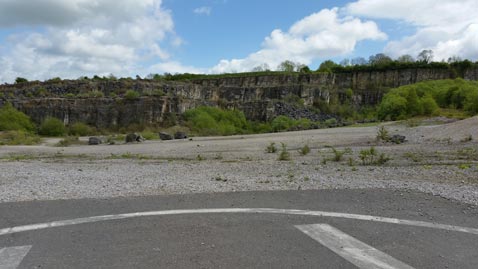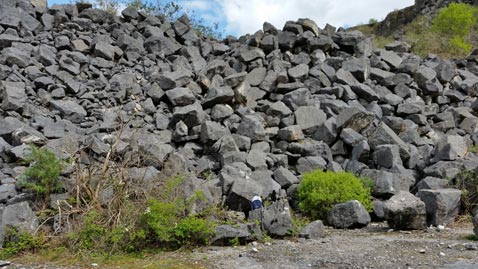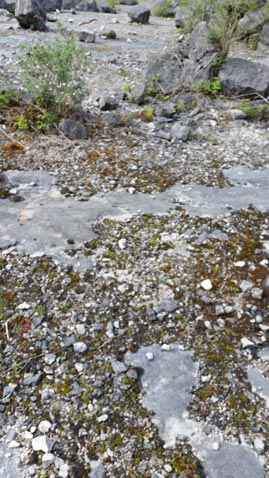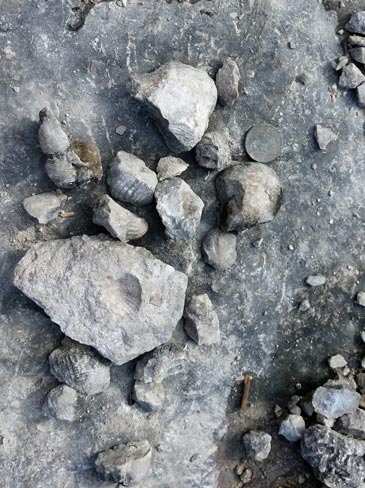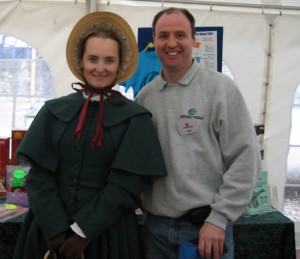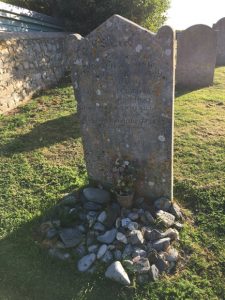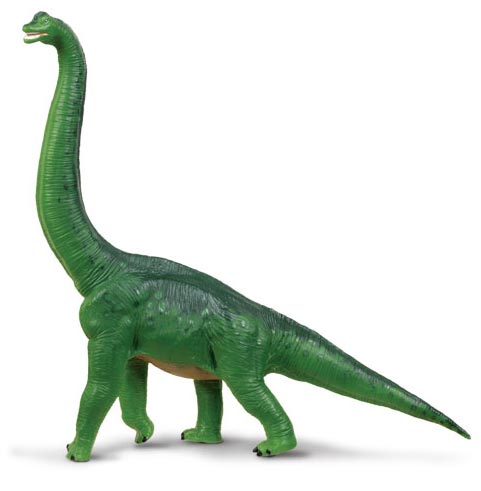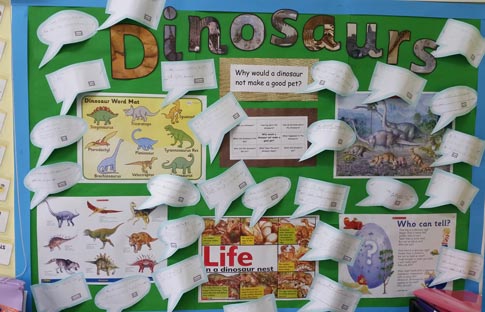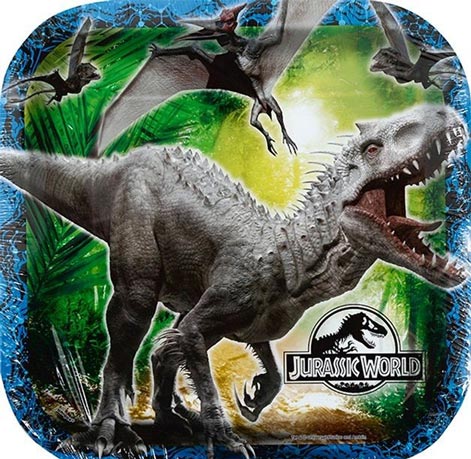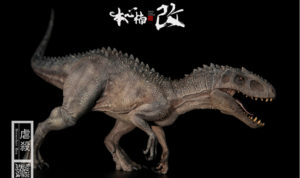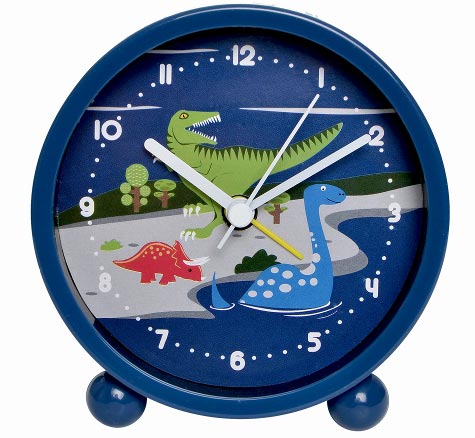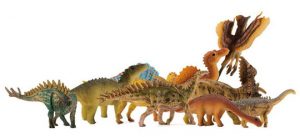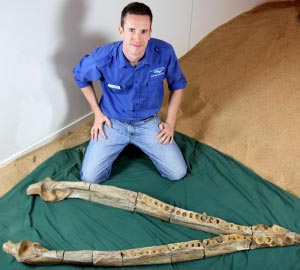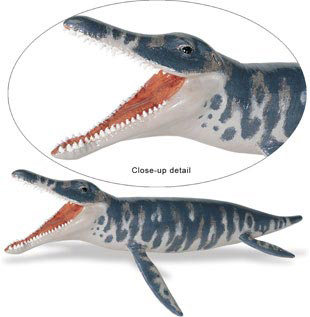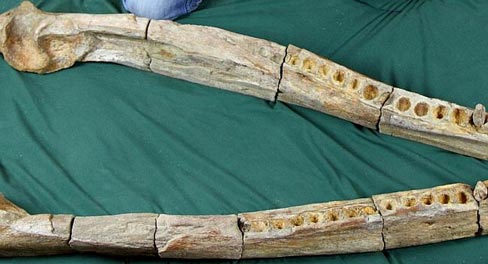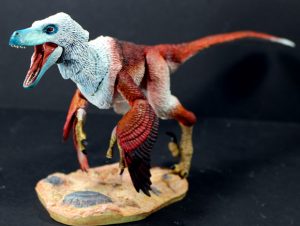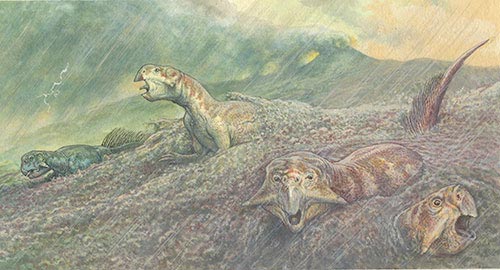Rare Fossil Site Threatened (Hall Dale Quarry)
Former Quarry Could be Transformed into Housing and Commercial Development
The huge Hall Dale Quarry near Matlock, Derbyshire, could be transformed, with the potential loss of an amazing fossil location, if the local authority grants permission for a mixed residential and commercial development on the site. Hall Dale Quarry is a disused limestone quarry. We at Everything Dinosaur, don’t know when the quarrying of limestone blocks ceased, what we do know is that the rocks exposed at this location contain a huge diversity of Carboniferous invertebrate fossils.
Fossil Finds are Extremely Common
Fossils are extremely common at the quarry, whilst many amateur collectors split the boulders with heavy-duty chisels to access the fossil material, just a few minutes exploring the scree on the quarry floor will yield plenty of specimens. Fossils of a variety of Brachiopods, Crinoid stems and large Corals litter the site and with careful searching some nice examples of marine Gastropods (mainly internal moulds), can be discovered too.
The strata represents a shallow, marine environment and the rocks at the quarry are part of the Eyam limestone formation. They date from the Early Carboniferous (Visean faunal stage of the Middle Mississippian Epoch [345-328 mya]). The site is hidden from the road and is approached via a small path leading through a wooded area, although it is just a few minutes’ drive from the bustling centre of the Derbyshire market town of Matlock, once at the quarry face, it’s a different world. On the day Everything Dinosaur visited, the quarry was deserted, we did not see a single person for the best part of three hours.
A View from the Helicopter Pad at Hall Dale Quarry
Picture credit: Everything Dinosaur
Hall Dale Quarry
The rock strata forms a series of platforms (three in total), Hall Dale Quarry is a popular location with climbing clubs, the sheer rock faces and huge piles of stone provide plenty of different climbing routes to explore. We would advise that fossil collectors stay on the ground level, there are plenty of fossils to be found and there is no need to climb the boulders.
Enormous Boulders at Hall Dale Quarry
Picture credit: Everything Dinosaur
During our research, prior to our fossil hunting trip, we visited the excellent website of UK Fossils: UK Fossils. As we prepared for our visit, we came across a news article from November 2014 that outlined plans for the development of this rural space, what is termed a brownfield site. 4M Property Partners had submitted plans to convert the quarry into a development consisting of mixed residential and commercial properties.
Plans to Develop the Quarry Site
Plans had been submitted to the council to build some 220 houses, and to convert 400 square metres into a restaurant and a café. In addition, the planning proposal contained details of some 6400 square metres of office space. We at Everything Dinosaur are not sure exactly how fossil collecting would be affected by these developments, we are also unsure as to how the planning application has progressed. However, we would like to express our concern that such an amazing place might be lost forever.
Whilst we can appreciate that Matlock, like many towns in the UK, may have a need for more houses and that such a development might boost the local economy, as we stood in the quarry, totally in awe of the spectacular scenery and surrounded by evidence of a tropical, marine environment that existed some 340 million years ago, it seemed such a shame that this location might soon be unrecognisable.
Many Different Types of Invertebrate Fossil can Be Found in the Scree
Picture credit: Everything Dinosaur
A Remarkable Fossil Heritage
There may be an urgent need for more local housing. The town of Matlock might desperately require additional commercial properties. We feel that we are unable to comment with regards to these development plans, but we sincerely hope that the developers have at least considered the need to preserve some part of this remarkable location’s fossil heritage. There are fewer and fewer places in this country, where people can simply stop and stare and admire rock formations and the fossil treasures they contain within. These special sites demonstrate the rich geology of our landscape and allow visitors to explore life in the past. We hope that any development is undertaken in sympathy with the astonishing geology of this location.
A Few Minutes Collecting and So Many Fossils
Picture credit: Everything Dinosaur
For models and replicas of Palaeozoic creatures and other prehistoric animals: CollectA Age of Dinosaurs Popular Figures.
Wishing to express our concerns, the team member who visited the site contacted the planning department of Derbyshire Dales District Council. A very helpful person in the department explained that the planning team could be emailed, allowing concerns about the need to develop the location in sympathy with the geology of the area to be put on record. Everything Dinosaur subsequently did this and in addition, emailed Natural England to raise awareness of the development of this brownfield site with that organisation.
Raising Awareness About the Potential Loss of the Quarry
If you have collected fossils at Hall Dale Quarry and wish to make a point with reference to the re-development of this site and the potential loss of this fossil collecting location, then we would urge you to do so.
Planning application reference: 14/00541/OUT (please quote this reference when emailing the planning department or Natural England).
Email: [email protected] to contact Derbyshire Dales District Council (we would advise that you include a contact telephone number in your email, so that a planning team member can get in touch)
Email: [email protected] (again quoting planning reference: 14/00541/OUT) to get in contact with Natural England
Whilst we do understand the difficult and often challenging job of district councils and we aware of the potential economic benefits to the local community this project may bring. We at Everything Dinosaur feel that it is important, to at least place on record a desire to consider the development of Hall Dale Quarry which takes into account the remarkable fossil bearing strata to be found at this location.
Please share.
Visit Everything Dinosaur’s award-winning website: Everything Dinosaur.


